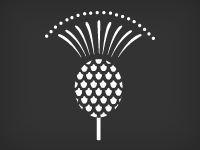
Friday 07/08/2015
Course Report by Peter Watts
Can a Coring Program Enhance Autumn and Spring Turf Recovery?
Coring is done to reduce soil compaction, improve soil oxygen levels, and reduce organic
matter. Commonly, large tine coring is done in the spring with smaller tine coring done periodically through the summer (on approximately 3 week interval). A recent study confirmed at least from a plant carbohydrate perspective the advantage to this type of coring program.
In a field study on a ‘Providence’ creeping bentgrass green, researchers at the University of Maryland compared the effects of coring on plant photosynthesis, respiration, and carbohydrate levels.
Measuring carbohydrate levels over two seasons, the authors found the highest overall TNC (Total Non-Structural Carbohydrates) levels in creeping bentgrass occurred in spring. From a management perspective these higher levels would promote turf recovery from the more aggressive spring coring with the larger diameter tines. Lower TNC levels were found in the summer across all treatments. This would justify the smaller quadra-tine coring, which according to the study would have a lesser negative impact on summer turf recovery than the use of larger tines.
The authors reported higher TNC levels at the end of the season with the spring and summer coring treatment. They hypothesized this would enable plants to recover more quickly from summer stress. If this past spring you cored and then followed it with timely quadra-tining, your turf is set for a quicker recovery from this past summer’s stress.
Re writing the above passage in layman’s terms, Autumn and Spring coring promote;
- Reduction of compaction in heavily trafficked areas
- Facilitates the exchange of gases, carbon dioxide exits the green and oxygen enters.
- Removes excessive root mass from the green to be replaced by sand.
- Carbohydrates are stored for protection in the stressful periods of the year ie: summer
Note: we have scarified this week to also reduce the root mass in the greens.
Topdressing is also vital in inputting new sand to greens that have “aged” and secondly to levelling out inperfections. Topdressed greens also provide a firmer surface as the sand combines with the remaining thatch.
Australian Open Volunteering
Volunteers are required for the Australian open, being held at The Australian Golf Club 26 – 29 November 2015. Interested members should contact Peter Westwood on 0408 842 823 or beaglew@bigpond.com ASAP
Warren and Gibson 2015
The Warren and Gibson season kicked off last weekend, with both teams starting the season well. The Warren team won 3.5 to 0 and the Gibson team 2 to 1.5. Well done boys!







